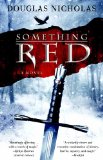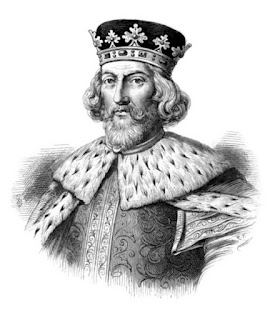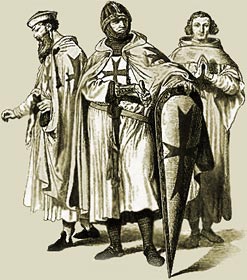Summary | Excerpt | Reading Guide | Reviews | Beyond the Book | Read-Alikes | Genres & Themes | Author Bio

Critics' Opinion:
Readers' Opinion:
First Published:
Sep 2012, 336 pages
Paperback:
Jun 2013, 336 pages
 Book Reviewed by:
Book Reviewed by:
Kim Kovacs
Buy This Book
This article relates to Something Red
Something Red is set in 13th century England, in the latter part of what is known as England's High Middle Ages (essentially the time period from the Norman conquest in 1066 to the end of the reign of the last Norman king in 1272).
Although English life was beginning to change with the gradual development of cities, the economy was still mostly agrarian in the 1200s, with 90% of the population (estimated to be around four million people in 1300 AD) making their living off the land, either as farmers (growing wheat for personal use or other grain crops to feed livestock) or herders (mostly sheep and goats). Villages and towns primarily served as commercial centers that were reached by poorly maintained mud roads; the only large city was London with an estimated population of 35,000. Overseas trade was just beginning, with the main export being wool.*
According to the University of Wisconsin, the king and the nobility (which included high-ranking clergy such as abbots and bishops) were at the top of the social structure, with about 200 individuals forming the ruling elite. Knighthood was conveyed on specific individuals for outstanding service or bravery; it's believed there were about 1,000 knights at the start of the 14th century.
The class of freemen on the next rung of the social ladder were tradesmen and "socmen". Socmen, about 15% of the population, were, in essence, tenant farmers who had the rights to pass their land from one generation to the next.
Most people, though, were serfs – individuals who were tied to the land in one way or another. The serfs were further broken down into three groups:
 King John is perhaps the best-known – or possibly the most notorious – king of the period, reigning from 1199 – 1216. During his monarchy, England lost Normandy to France in 1204. He quarreled with Pope Innocent III over church appointments in England and taxes paid to the church, and consequently Innocent issued an interdict against England in 1208 (which prevented the clergy from conducting most religious services, including marriages and celebration of the Eucharist), and a year later excommunicated the king. The situation lasted until John negotiated a truce in 1213. In 1215 John was forced to sign the Magna Carta, a document drafted by his barons that stated the king's will was not arbitrary and punishment could only be by the law of the land, not by decree. This document is considered pivotal in English history, and did much to lessen the power of the English monarchy.
King John is perhaps the best-known – or possibly the most notorious – king of the period, reigning from 1199 – 1216. During his monarchy, England lost Normandy to France in 1204. He quarreled with Pope Innocent III over church appointments in England and taxes paid to the church, and consequently Innocent issued an interdict against England in 1208 (which prevented the clergy from conducting most religious services, including marriages and celebration of the Eucharist), and a year later excommunicated the king. The situation lasted until John negotiated a truce in 1213. In 1215 John was forced to sign the Magna Carta, a document drafted by his barons that stated the king's will was not arbitrary and punishment could only be by the law of the land, not by decree. This document is considered pivotal in English history, and did much to lessen the power of the English monarchy.
Henry III ruled from John's death through 1272, a reign of 56 years. His tenure was marked by constant battles with his nobles over royal prerogatives. Edward I, Henry's eldest son, became king afterwards and expanded England's influence during his years in power, annexing Wales in 1277 and establishing an English overlordship over Scotland in a series of military campaigns (1296 – 1306).
 During this century the Crusades were at their height. The Crusades were wars proclaimed by the ruling Pope against the "infidel" Muslims in the Middle East with the intent to restore Christian access to holy sites in Jerusalem and surrounding lands. The 13th century began with the 4th Crusade initiated in 1202 by Pope Innocent III, with subsequent crusades being periodically instigated until the 9th Crusade ended in 1272. Although the wars were generally considered failures from the standpoint of advancing Christian faith, they had the positive effects of bringing Eastern technologies and culture to Europe and establishing trade routes.
During this century the Crusades were at their height. The Crusades were wars proclaimed by the ruling Pope against the "infidel" Muslims in the Middle East with the intent to restore Christian access to holy sites in Jerusalem and surrounding lands. The 13th century began with the 4th Crusade initiated in 1202 by Pope Innocent III, with subsequent crusades being periodically instigated until the 9th Crusade ended in 1272. Although the wars were generally considered failures from the standpoint of advancing Christian faith, they had the positive effects of bringing Eastern technologies and culture to Europe and establishing trade routes.
Picture of King John from The Medieval and Renaissance History Portrait Gallery
Picture of Crusaders from Middleages.org
*To say that overseas trade was just beginning and that cities were developing are relative terms as, long time before this, while the Roman Empire controlled England (from about 50 AD to 410 AD) trade and cities had flourished, with exports including metals such as silver, iron and copper, and imports including pottery, olives and olive oil. But after the fall of the Roman Empire, the societal structures needed to maintain cities collapsed. So, by the time the High Middle Ages rolled around, England was mostly an agrarian society again.
Filed under People, Eras & Events
![]() This "beyond the book article" relates to Something Red. It originally ran in September 2012 and has been updated for the
June 2013 paperback edition.
Go to magazine.
This "beyond the book article" relates to Something Red. It originally ran in September 2012 and has been updated for the
June 2013 paperback edition.
Go to magazine.





The House on Biscayne Bay
by Chanel Cleeton
As death stalks a gothic mansion in Miami, the lives of two women intertwine as the past and present collide.

The Flower Sisters
by Michelle Collins Anderson
From the new Fannie Flagg of the Ozarks, a richly-woven story of family, forgiveness, and reinvention.

The Funeral Cryer by Wenyan Lu
Debut novelist Wenyan Lu brings us this witty yet profound story about one woman's midlife reawakening in contemporary rural China.
Your guide toexceptional books
BookBrowse seeks out and recommends the best in contemporary fiction and nonfiction—books that not only engage and entertain but also deepen our understanding of ourselves and the world around us.